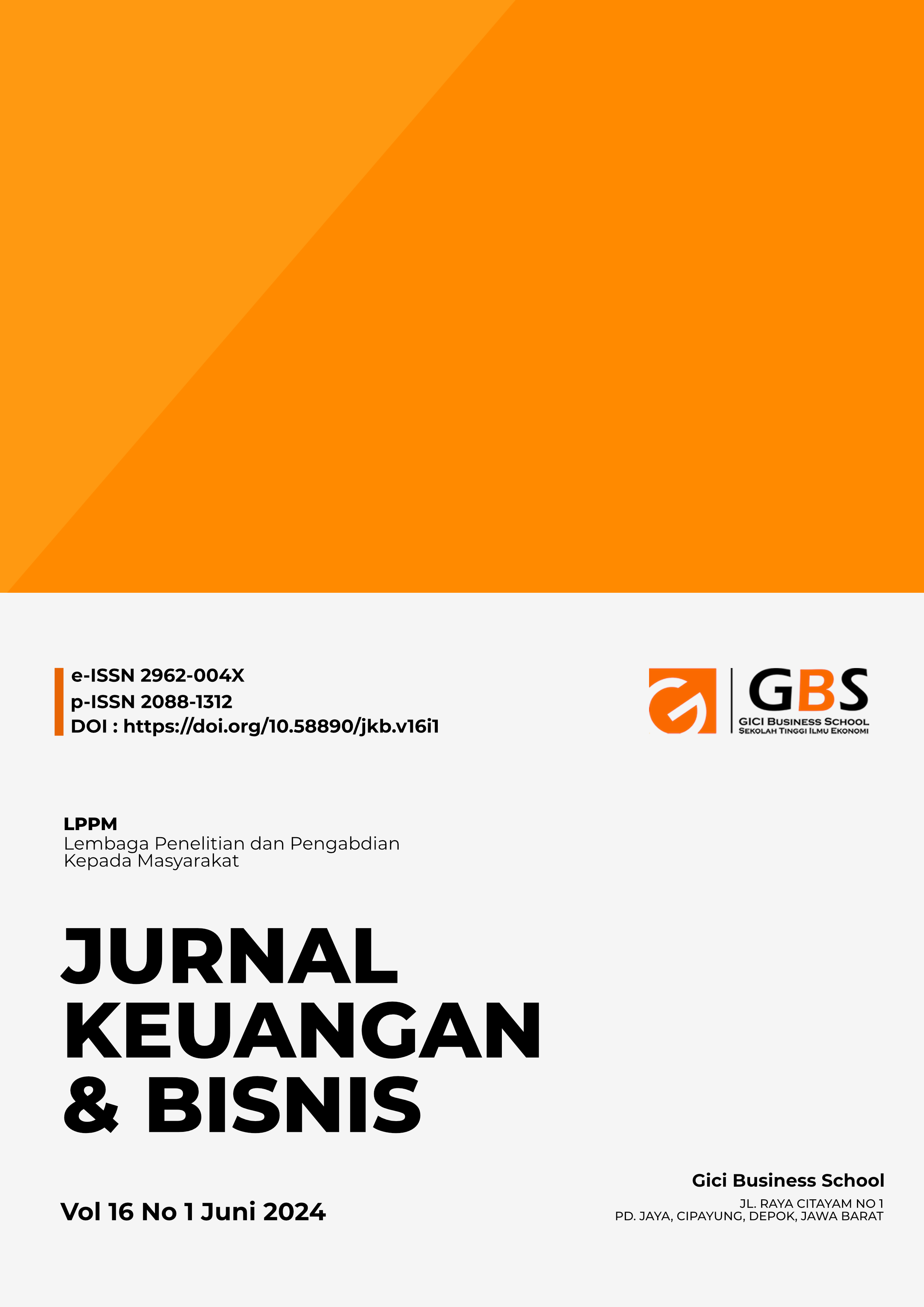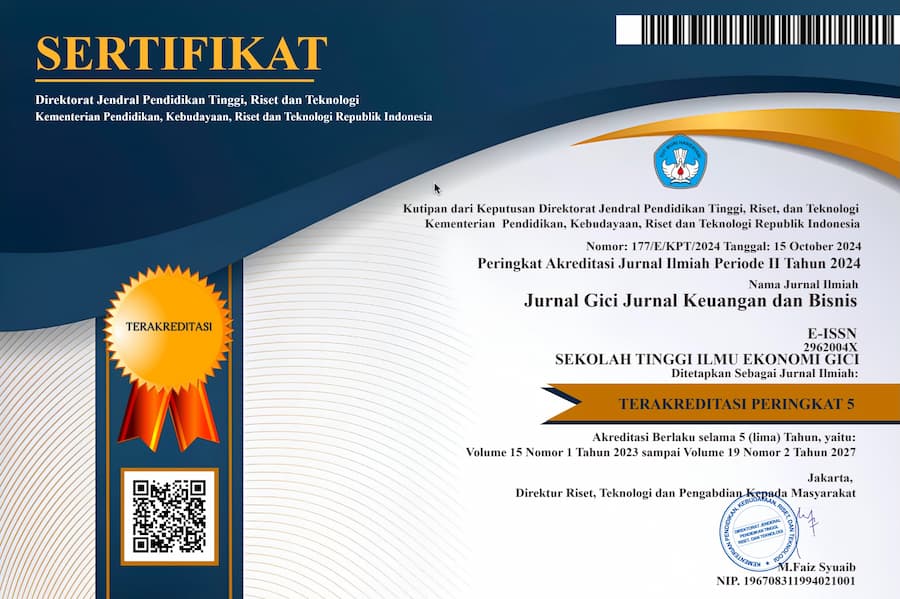DAYA SAING EKSPOR LADA INDONESIA KE VIETNAM, AMERIKA SERIKAT DAN INDIA
DOI:
https://doi.org/10.58890/jkb.v16i1.230Keywords:
Competitiveness, ECI, EPD, Pepper, RCAAbstract
Pepper is a spice commodity that has the potential to be developed due to its superior quality. This study aims to analyze the competitiveness of pepper to identify promising export markets and potential development in destination countries. The data used is secondary data which is a combination of time series data and cross section data. The range of years used starts from 2017 to 2022 sourced from the Central Statistics Agency (BPS), Trade Map, and Uncomtrade. Data analysis is used with the Revealed Comparative Advantage (RCA), Export Product Dynamics (EPD), and Export Competitiveness Index (ECI) methods. The results of the analysis show that Indonesian pepper exports to destination countries such as Vietnam, USA, and India have a competitive advantage and comparative advantage in the destination country because the RCA value is more than 1. The competitiveness of Indonesian pepper exports to destination countries varies, the average ECI value shows that Indonesia has good competitiveness in pepper exports to India, but tends to be weaker than Vietnam and the United States. ECI values > 1 indicate that Indonesia has a competitive advantage in the pepper export market to India, while ECI values < 1 for Vietnam and USA indicate that Indonesia has lower competitiveness in these export markets.
Downloads
References
Aldy Purnomo., & Rochmat. 2017. Analisis Statistik Ekonomi dan Bisnis dengan SPSS. Ponorogo:CV Wade Group.
Balassa, B. (1965) Trade Liberalization and Revealed Comparative Advantage. The Manchester School of Economic and Social Studies, 33, 99-123. https://doi.org/10.1111/j.1467-9957.1965.tb00050.x
Balqis, P., & Yanuar, R. (2021). Daya Saing Ekspor Lada Indonesia di Pasar Amerika dan Eropa. Forum Agribisnis, 11(2), 182–194. https://doi.org/10.29244/fagb.11.2.182-194
Esterhuizent, D. (2006). Measuring and Analysing Competitiveness in The Agribusiness Sector: Methodological and Analytical Framework. University of Pretoria. Petroria.
Evival, R. 2013. Tanaman Rempah dan Fitofarmaka. Lampung: Lembaga Peneitian Universitas Lampung
Kamaludin, R. (2018). Competitiveness and Exports Sustainability of The Indonesian Natural Rubber. Sriwijaya International Journal Of Dynamic Economics And Business, 2(1), 85–98. http://ejournal.unsri.ac.id/index.php/sijdeb
Latif, A., Mardiana, A., & Yusuf, H. N. H. (2022). Analisis Peningkatan Ekspor dan Impor Serta Pengaruhnya Terhadap Neraca Perdagangan di Indonesia tahun 2017-2021. Gorontalo Development Review (GOLDER), 5(2), 115–126.
Latifah, Z., & Kadir. (2021). Performa Komoditas Minyak Sawit Indonesia Di Tataran Global: Mampukah Kita Menjadi Pemain Kunci? JSEP (Journal of Social and Agricultural Economics), 14(3), 250. https://doi.org/10.19184/jsep.v14i3.26550
Manalu, D. S. T., Harianto, Suharno, & Hartoyo, S. (2022). Analisis Daya Saing Serta Faktor-Faktor yang Memengaruhi Pangsa Pasar Negara Eksportir Utama Kopi di Negara Importir Utama Kopi. Buletin Ilmiah Litbang Perdagangan, 16(1), 1–24.
Nurhayati, E., Hartoyo, S., & Mulatsih, S. (2018). Pengembangan Pasar Ekspor Lada Indonesia. Buletin Ilmiah Litbang Perdagangan, 12(2), 267–288. https://doi.org/10.30908/bilp.v12i2.335Balqis, P., & Yanuar, R. (2021). Daya Saing Ekspor Lada Indonesia di Pasar Amerika dan Eropa. Forum Agribisnis, 11(2), 182–194. https://doi.org/10.29244/fagb.11.2.182-194
Putri, R. D. S., & Muljanto, S. (2021). Pengaruh Perdagangan Internasional (Ekspor-Impor) dan Investasi Terhadap Pertumbuhan Ekonomi di Indonesia. Journal of Public Auditing and Financial Managemen, 2021(1), 13–26.
Sari, A. C., Mukhlis, I., & Utomo, S. H. (2022). Analisis Dampak Pandemi Covid-19 Terhadap Ekspor Dan Pertumbuhan Ekonomi Indonesia Tahun 2021. Jurnal Economina, 1(4), 908–920. https://doi.org/10.55681/economina.v1i4.197
Ulhaq, F. D., Wahidah, A. H., Hasanah, U. U., Hartanti, M. I., & Fajrina, A. (2021). Potensi perdagangan komoditas lada dari indonesia ke vietnam sebagai salah satu pasar non-tradisional. Jurnal Ekonomi Dan Kebijakan Pembangunan, 10(1), 55–71. https://doi.org/10.29244/jekp.10.1.2021.55-71














